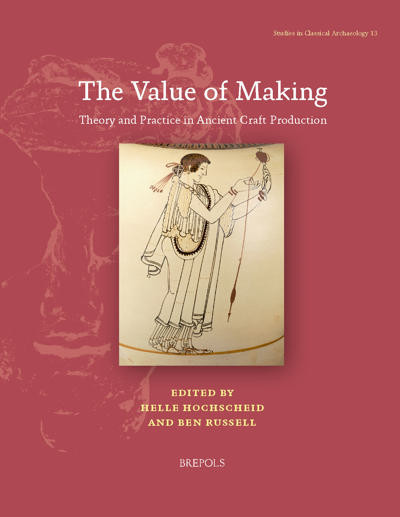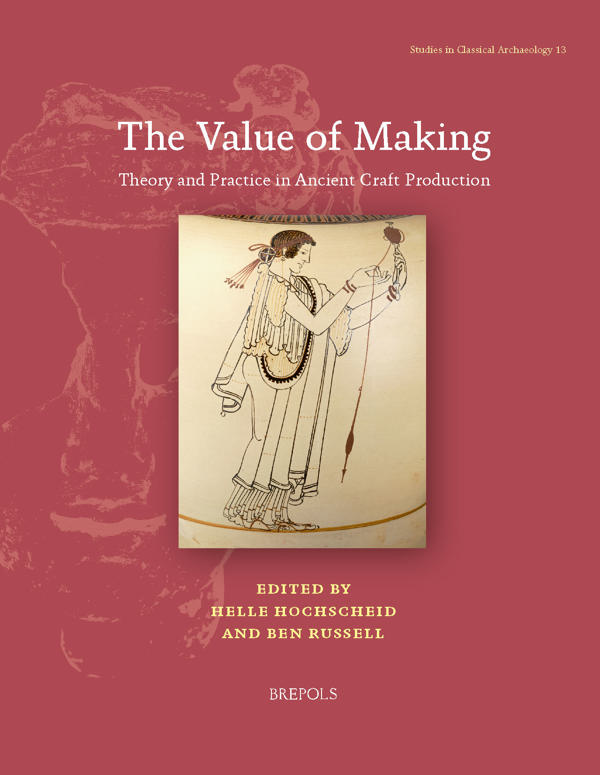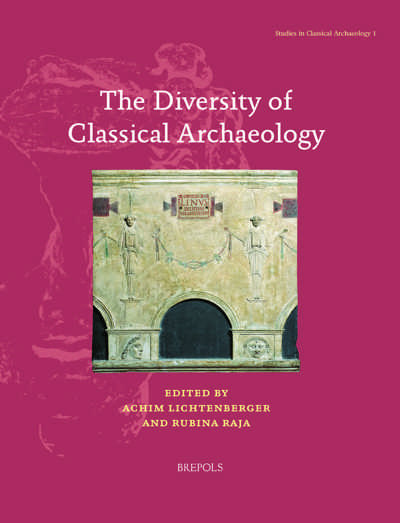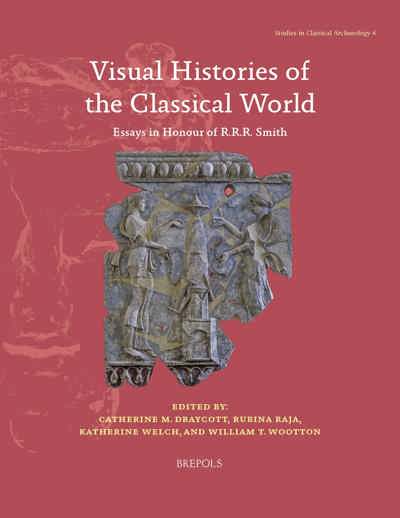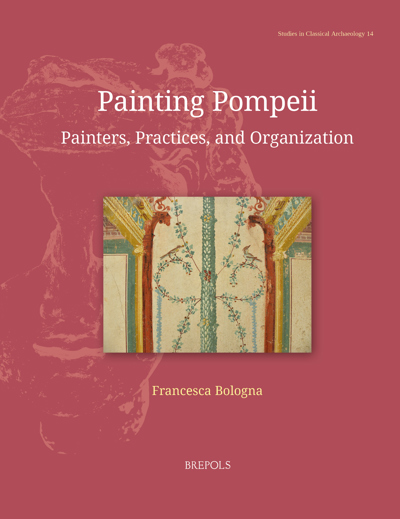
The Value of Making
Theory and Practice in Ancient Craft Production
Helle Hochscheid, Ben Russell (eds)
- Pages: xiv + 254 p.
- Size:216 x 280 mm
- Illustrations:74 b/w, 46 col., 12 tables b/w.
- Language(s):English
- Publication Year:2021
- € 90,00 EXCL. VAT RETAIL PRICE
- ISBN: 978-2-503-59519-1
- Paperback
- Available
This volume brings together contributions by scholars interested in making and the role of the maker to discuss what new anthropological and sociological approaches might add to our understanding of ancient craft production and its value to the makers and their societies.
“On the whole, this book offers a variety of valuable contributions to our knowledge of the use, production and meaning of ancient material culture. It is especially noteworthy for dealing with previously neglected questions about how, why and, especially, by whom certain objects were made. By intertwining anthropological and sociological discussions, hands-on experience, and archaeological evidence, this volume certainly provides a fresh outlook on old crafts.” (Simona Perna, in Bryn Mawr Classical Review, 06.40.2023)
This volume presents new scholarship on the value and valuing of craft production in ancient societies around the Mediterranean. Ancient economic history, especially when approached archaeologically, has typically — and with good reason — focused upon the objects that were produced by craftspeople, their form and style, and their distribution. Typological approaches necessary for sorting and analysing large bodies of material evidence have also prioritized the final form of artefacts. Yet it was first and foremost the craftspeople behind these items who were responsible for an item’s functionality, its purpose, and its value, and these roles have in recent years received fresh attention in anthropological and sociological studies.
The contributions gathered in this volume revolve around the role of makers, their handling of materials, and their place in networks of production and consumption, whilst at the same time remembering that craftspeople were never lone forces but depended on wider networks of supplies, colleagues, and consumers, as well as more ephemeral considerations such as aesthetics and religious value. Through this approach, the volume sheds new light not only on a range of crafts and materials from the ancient world, but also on the value of making and the making of value in ancient Mediterranean societies.
List of Illustrations
List of Abbreviations
1. Introduction: New Approaches to Old Crafts — HELLE HOCHSCHEID AND BEN RUSSELL
I. Communities of Making
2. Craft, Ownership, and Identity: Making, Thinking, and Being (Together) — ANN BRYSBAERT AND HELLE HOCHSCHEID
3. Preparing for War: Craftspeople, Management, and Innovations — NATACHA MASSAR
4. Ancient Maker Spaces: The Value of Craft Communities in Multi-Material Workshops in Late Antiquity — BETH MUNRO
II. Craft Organization and Identity
5. Roman Stone Carvers and their Chaîne Opératoire — BEN RUSSELL
6. Reconstructing Socio-Economic Work Practices between Industries: Cross-Industry Relations in Roman Italy — ELIZABETH A. MURPHY
7. Reeds to Riches: The Crafts of Making Ancient Auloi — DANISE VAN HAL AND HELLE HOCHSCHEID
8. Spinning — The Invisible Profession — MARY HARLOW
III. Form, Function and Authenticity
9. Cylinder Seals in the Late Bronze Age Aegean (c. 1600–1100 BC) — GERT JAN VAN WIJNGAARDEN
10. Assessing Value Attribution: The Evidence of Votive Offerings — HEIDE FRIELINGHAUS
11. Precious Pots: Making and Repairing Dolia — CAROLINE CHEUNG
12. Greek and Roman Glyptic: alibi ars, alibi materia — KENNETH LAPATIN
IV. Old Crafts for the Future
13. On the Value of Making and Learning — WILL WOOTTON
